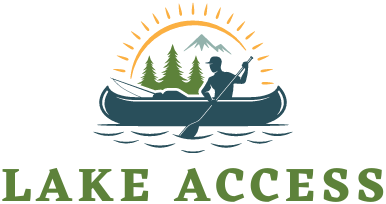Owning a property with a lake or pond can be a delightful experience, as it offers a tranquil and picturesque setting that’s hard to resist. Nonetheless, one common predicament that many pond owners encounter is the presence of leeches. These blood-sucking creatures can quickly become bothersome and, more importantly, pose a potential hazard to the overall well-being of other aquatic organisms.
In this blog, we will delve into effective strategies that can help eliminate leeches from your lake or pond, ensuring a pristine and pleasurable water sanctuary that everyone in its midst can thoroughly enjoy.
What is a Leech?
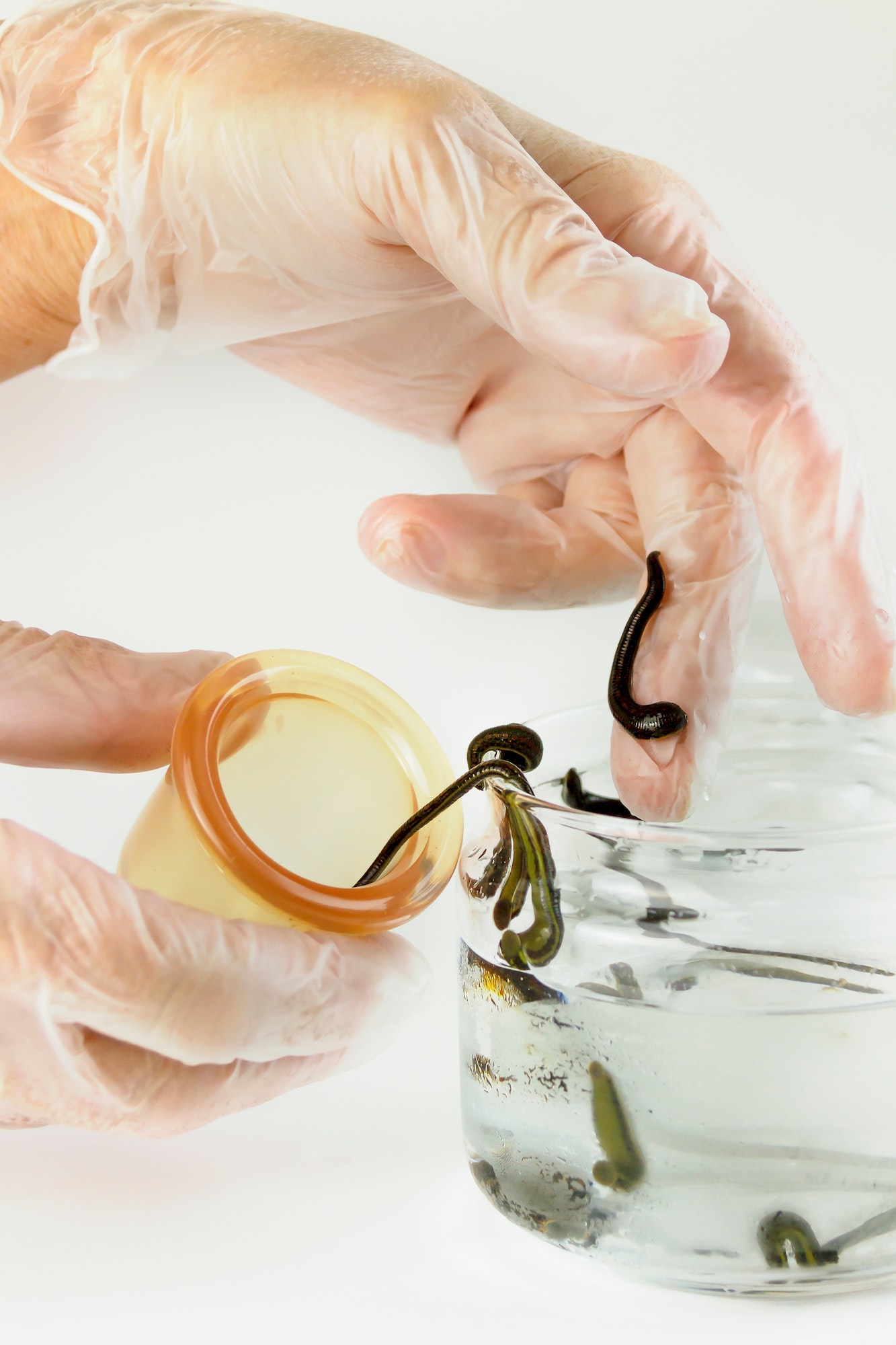
Leeches are small, brownish-segmented worms that reside in wet or marshy areas. Although most species are harmless, their preferred feast is the blood of creatures much larger than them. However, they bring inconvenience by being an unnerving presence, especially for people who frequent these water bodies for relaxation or sporting activities. While their diet doesn’t transfer diseases, it’s important to admit that no one wants these flexible fellows adorning their skin during a delightful swim!
How does a Leech Function?
Isn’t it intriguing how such tiny creatures manage to cling on and feed almost unnoticed? Leeches are stealthy operators, indeed. Equipped with sucker-like structures at both extremities, they attach themselves firmly to hosts and feast undisturbed. In addition, their saliva contains anesthetics that prevent the host from realizing the bite and antimicrobial agents that protect from infection. Their survival tactics are quite ingenious, wouldn’t you agree?
Non-Chemical Techniques to Get Rid of Leeches
Traps
Leech traps can be a simple and effective method for controlling leech populations. A rotten meat chunk left in a can or jar with small openings will attract leeches, which then can’t escape. Set these traps around the lake and watch as these unwelcome guests decrease in population. Sounds easy, doesn’t it?
Manipulation of Lake Environment
Changing a lake’s physical parameters can be an efficient way to discourage leech breeding. For instance, reducing vegetation, making the lake floor less muddy, or introducing fish species that eat leeches can help create an unwelcoming habitat for these pests.
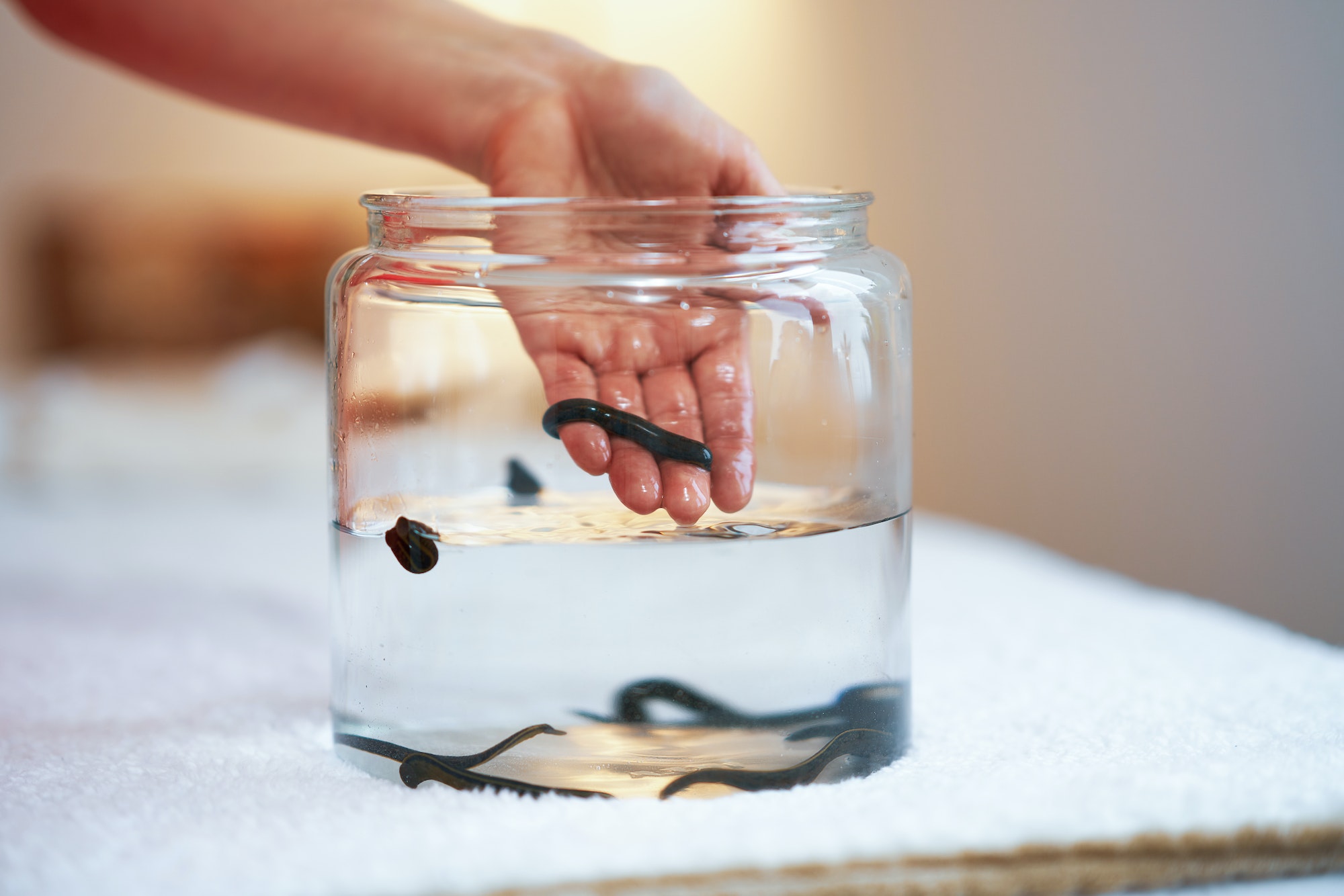
Use of Chemicals to Kill Leeches
Copper Sulfate
Copper sulfate is a commonly used chemical for controlling leech populations. It disrupts their respiratory system and causes them to detach from their hosts. However, copper sulfate can be toxic to fish and other aquatic organisms if used in excessive amounts. Therefore, it should be applied cautiously and in the recommended dosage.
Potassium Permanganate
Potassium permanganate is another chemical option for leech control. It is an oxidizing agent that effectively kills leeches. However, like copper sulfate, it can harm other aquatic life if used improperly. Proper dosing and application techniques should be followed to avoid adverse effects.
Biological Control Agents
Certain biological control agents, such as leech-specific bacteria or nematodes, can be used to target leeches without harming other organisms. These agents infect leeches and disrupt their life cycle. However, their availability and effectiveness may vary, and professional guidance may be required for their successful implementation.
Use of Pesticides
For a more intense infestation, chemical control measures might be crucial. Pesticides specific to aquatic pests, like copper sulfate or certain organophosphates, can be notably effective. They work through the direct extermination of leeches, minimizing their growth and check their multiplication rate. However, remember that their usage must be appropriately managed to avoid harmful repercussions on other wildlife and the lake ecosystem.
Considerations When Using Chemicals
While chemicals can be useful, users should remember they are potent substances. They can inadvertently harm non-target organisms and cause alterations to the lake’s ecological balance. Therefore, it’s pivotal to use these substances sparingly, consider timing application when non-target organisms are least vulnerable, and always adhere to manufacturer’s instructions. A professional pest controller’s advice might be beneficial to guide appropriate use
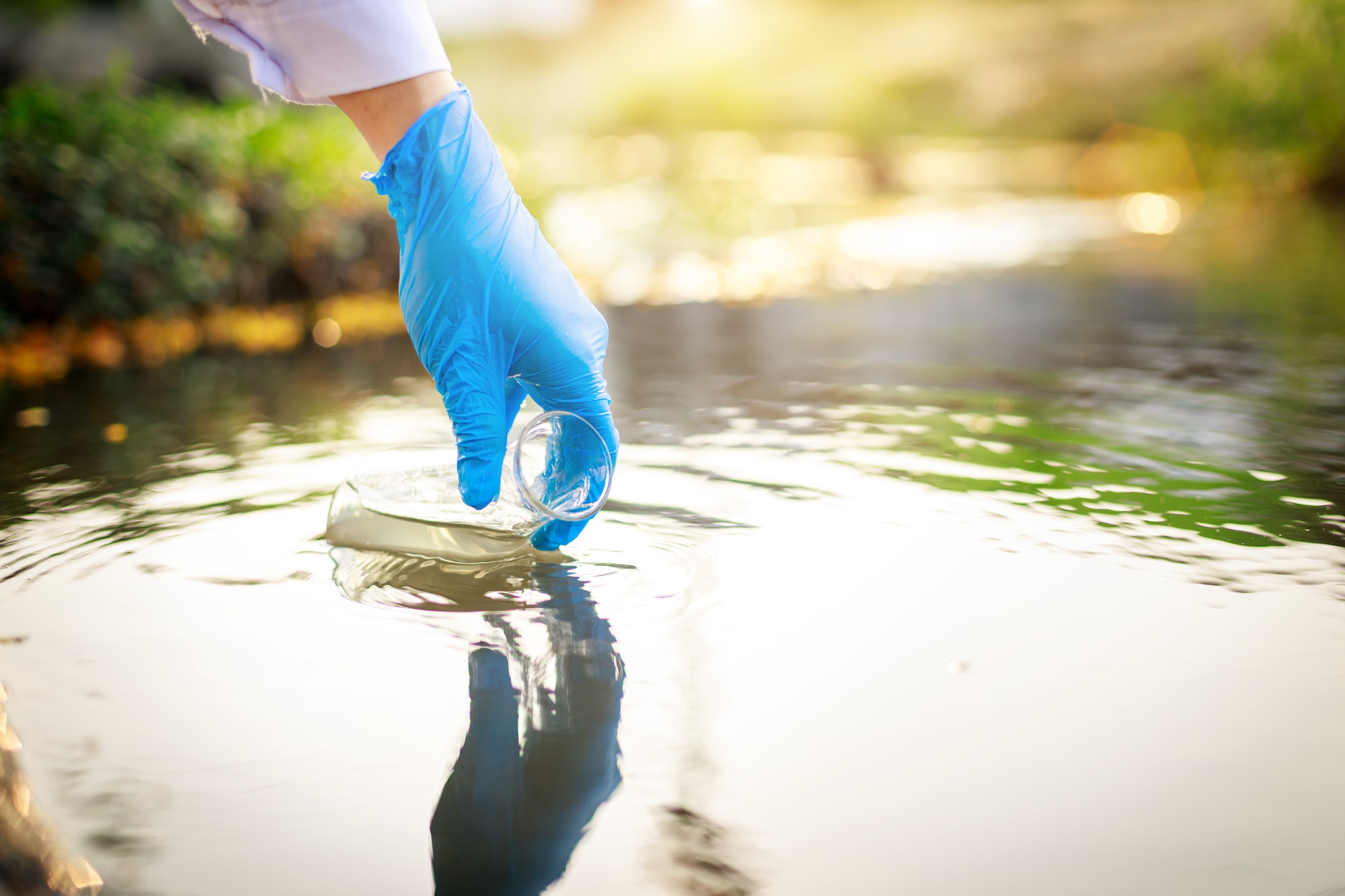
Dangers of Leeches in a Body of Water
Health problems
Leeches can carry diseases, including HIV and hepatitis B. Proper leech removal is essential to avoid bites that might cause extended bleeding. Leeches are usually harmless, but they can bite and carry diseases. Leeches can cause allergic reactions and may also carry bacteria that can cause infection. There is some potential for HIV infection from leech bites, but this is rare.
Blood Loss
One of the dangers of having leeches in your lake, pond, or yard is blood loss. Leeches are bloodsucking creatures that attach themselves to their victims and feed on their blood. This can lead to severe blood loss. If you have leeches in your lake, pond, or yard, getting rid of them as soon as possible is crucial.
Ecological damage
The dangers of having leeches in your water body are their potential to spread diseases, block drainage channels, and be dangerous to fish and ducks. To prevent them from entering your water body, use a filter and clear the area of vegetation.
Diseases spread
Many dangers are associated with leeches in your lake, pond, or yard. Leeches can cause itching and purpura (a dangerous skin condition) and cause an allergic reaction, prolonged bleeding, and the possibility of contracting a bacterial disease. Evidence suggests leeches may carry viruses like HIV, but the risk is low. Proper leech removal is vital to avoid any potential health hazards.
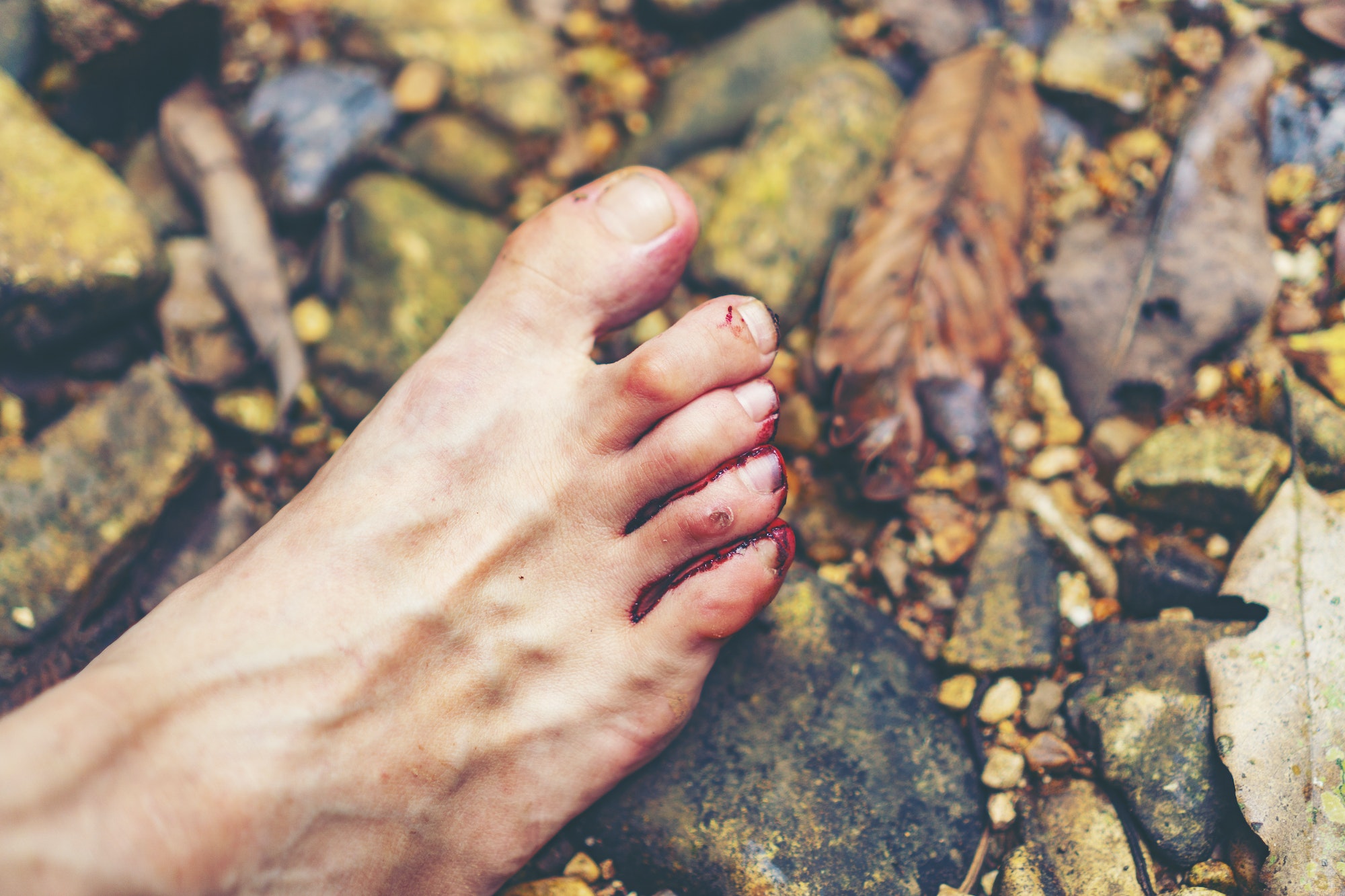
Prevention of Future Leech Infestations
Prevention is always better than cure, right? To prevent the rebounding of these clingy critters, integrate preventative measures. Regular cleaning and maintenance, managing vegetation around the lake, introducing predatory fishes; and timely inspection of the lake for early detection of a pest are excellent preventative approaches. Maintaining a healthy, oxygen-rich lake thus doesn’t merely boil down to aesthetic appeal; rather, it also aids in retaining a balanced ecosystem.
How to Remove a Leech from Your Body
Discovering a leech latched onto your body can be quite an alarming experience. However, there are specific, easy steps that you can follow to safely and effectively remove the leech.
Do Not Panic
First and foremost, stay calm. Although it’s easier said than done, remember that leeches are generally harmless. Their bites might cause discomfort but they won’t instigate severe harm.
Don’t Pull it Off
Avoid yanking the leech off, as this can leave its jaws under your skin, leading to infection. It might also cause the leech to regurgitate its stomach contents into the wound, increasing infection risk.
Slide and Push
The most recommended method is to slide your fingernail towards the leech’s oral sucker (the narrower end, where it’s feeding), then push it sideways. This disrupts the suction and forces the leech to let go. Another method involves using a flat, blunt object to achieve the same.
Apply Heat or Salt
If the ‘slide and push’ method proves unsuccessful, you can try applying heat gently to the leech’s body (using a lighter or match), but this risks burning your skin. Alternatively, salt or saline solution can be used instead, sprinkling it on the leech to induce a release.
Post-Removal Care
Once the leech has been removed, ensure to clean the bite area with warm water and soap, then apply an antiseptic. Leech bites can bleed for a while due to their saliva’s anticoagulant properties, so use a bandage to control bleeding.
These procedures should help handle a leech bite situation effectively without causing harm or triggering infection. Remember, whilst outdoors near a leech-infested area, using repellants and wearing appropriate attire can help prevent these encounters effectively.
FAQs
What do leeches look like?
Leeches are long, tube-shaped animals that can be up to 20 inches long. They have round mouths with several rows of teeth and conspicuous eyes on the tops of their bodies. Leeches have two suckers on each end of their bodies and use them to grasp, feed, and move around. Freshwater lakes and tall grasses are also frequent places to find leeches.
What are the different types of leeches?
There are three types of leeches: the bloodsucking leech, the parasitic leech, and the lungworm leech. These types of leeches feed off of animals or humans to survive. Leeches can grow as large as 10 inches and consume a lot of blood in one feeding session.
Where do leeches live?
Leeches live worldwide, but they are usually found in freshwater habitats. There are around seven hundred different leech species, and ninety of them are marine.
Leeches prefer to live in mud or rocks at the bottom of water bodies, and you usually won’t see them until they’re ready to suck your blood. Leeches are primarily green and brown and have red or black spots.
What do leeches eat?
Leeches are predatory creatures that feed on other small animals and insects. They will also consume blood if given the opportunity. When a leech attaches to its victim, it will make a small incision and then insert its proboscis. This is an extendable tube-like structure the leech uses to pierce the skin and suck up blood.
How do leeches reproduce?
Leeches are hermaphrodites, meaning each individual has male and female reproductive organs. During mating, two leeches will exchange sperm. Each leech then produces a cocoon in which its eggs develop. Once the eggs hatch, the young leeches are on their own and must find food and shelter.
What are the benefits of leeches?
There are many benefits to having leeches in your lake, pond, or yard. They help keep the water clean by eating algae and other tiny organisms. Leeches also provide a food source for fish, amphibians, and reptiles. In addition, leeches help control mosquito populations by eating their larvae.
How can I get rid of leeches in my pond?
1. Clear out the sludge at the bottom of your pond to make life harder for leeches.
2. Use traps to catch leeches and remove them from the area.
3. Use products to control the pond muck level and discourage leeches from laying eggs.
What are the risks of leeches?
If a leech bites you, remove it quickly and easily without medical assistance. Taking anticoagulant medication increases the risk of prolonged bleeding after a leech bite. Leeches can carry bacteria that can infect the site where the leech bit you. Some leeches may carry other viruses, but there is no evidence to suggest humans have been infected with HIV from a leech.
